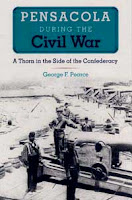
by Chandra Manning
From the publisher:
A vivid, unprecedented account of why Union and Confederate soldiers identified slavery as the root of the war, how the conflict changed troops’ ideas about slavery, and what those changing ideas meant for the war and the nation.
Using soldiers’ letters, diaries, and regimental newspapers, Chandra Manning allows us to accompany soldiers—black and white, northern and southern—into camps and hospitals and on marches and battlefields to better understand their thoughts about what they were doing and why.
Manning’s work reveals that Union soldiers, though evincing little sympathy for abolitionism before the war, were calling for emancipation by the second half of 1861, ahead of civilians, political leaders, and officers, and a full year before the Emancipation Proclamation. She recognizes Confederate soldiers’ primary focus on their own families, and explores how their beliefs about abolition—that it would endanger their loved ones, erase the privileges of white manhood, and destroy the very fabric of southern society—motivated even non-slaveholding Confederates to fight and compelled them to persevere through military catastrophes like Gettysburg and Atlanta, long after they grew to despise the Confederate government and disdain the southern citizenry. She makes clear that while white Union troops viewed preservation of the Union as essential to the legacy of the Revolution, over the course of the war many also came to think that in order to gain God’s favor, they and other white northerners must confront the racial prejudices that made them complicit in the sin of slavery. We see how the eventual consideration of theenlistment of black soldiers by the Confederacy eliminated any reason for many Confederate soldiers to fight; how, by 1865, black Union soldiers believed the forward racial strides made during the war would continue; and how white Union troops’ commitment to racial change, fluctuating with the progress of the war, created undreamt-of potential for change but failed to fulfill it.
An important and eye-opening addition to our understanding of the Civil War.
Chandra Manning, a graduate of Mount Holyoke College, received an M.Phil from the National University of Ireland, Galway, and took her Ph.D. at Harvard in 2002. She has lectured in history at Harvard and taught at Pacific Lutheran University in Tacoma, Washington. Currently, she is assistant professor of history at Georgetown University and lives in Alexandria, Virginia, with her husband and son. This is her first book.From the critics:
For this impressively researched Civil War social history, Georgetown assistant history professor Manning visited more than two dozen states to comb though archives and libraries for primary source material, mostly diaries and letters of men who fought on both sides in the Civil War, along with more than 100 regimental newspapers. The result is an engagingly written, convincingly argued social history with a point—that those who did the fighting in the Union and Confederate armies "plainly identified slavery as the root of the Civil War." - Publisher's Weekly
From CWBN:
This is the first paperback edition of a hardcover book.
 by Drew Pullen
by Drew Pullen























